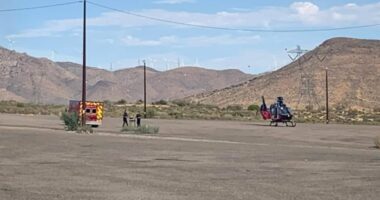The Big Bear Valley is one such community. A vacation destination just two hours from L.A. nearly 7,000 feet up in the San Bernardino Mountains, it is home to two ski resorts, a picturesque lake and miles of hiking and bike trails. On busy summer and ski weekends, the year-round population of roughly 12,000 swells, with 3 million annual visitors.
It’s also among the most ecologically diverse areas in the U.S. and one of the few alpine forests left in Southern California, said Julie Donnell, acting district ranger for the Forest Service’s Mountaintop Ranger District, which includes Big Bear. Before large-scale human habitation, many of the forests here had naturally occurring wildfires every five to 10 years, but today, most of the nearby land hasn’t seen any in more than 100 years, increasing the risk of severe fire.
“If we have a fire come in when the fuel loads are this high, we can expect a high intensity fire to come in and burn all of this,” Donnell said. “So if we don’t do this work, we run the chance of completely losing all of it.”
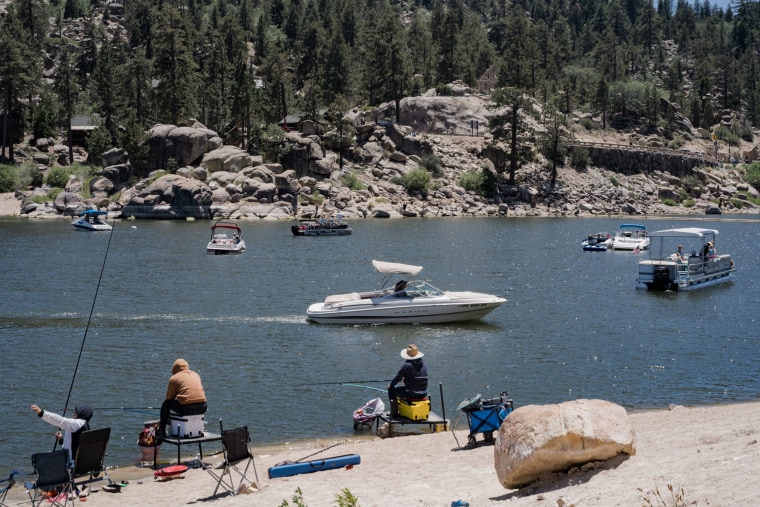
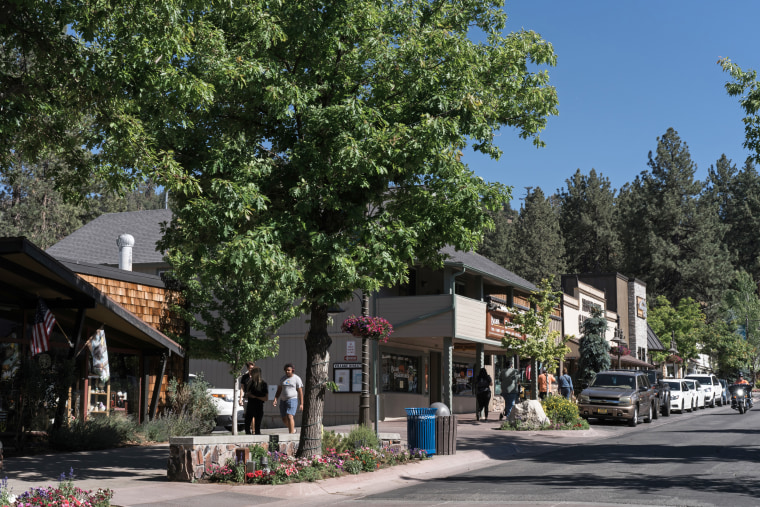
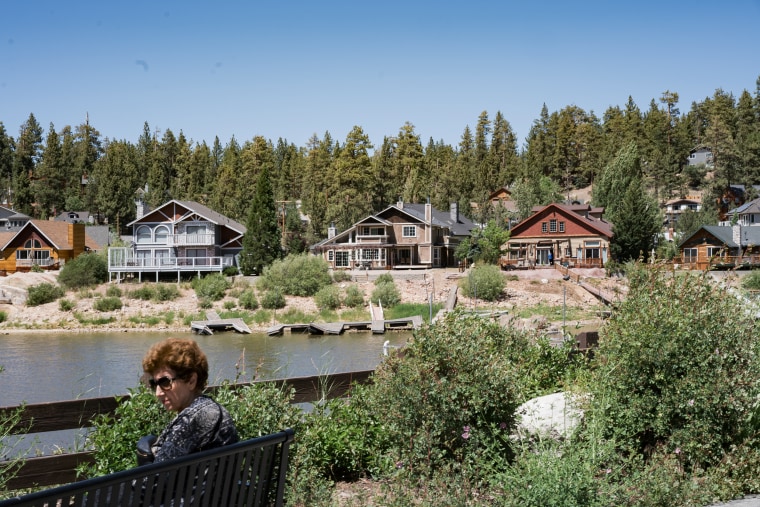
‘You’d be wrong’
In the two decades since the U.S. formalized its hazardous fuel program, much of the south side of Big Bear Lake, where most of the people live, was thinned. But like many forests that have gone decades without fire, that land generally requires multiple steps to fully reduce the risk, including removing the wood and brush piles created by thinning and conducting prescribed burns, like the one outside Barba’s neighborhood. Getting all that work done can take years.
Work is planned in projects covering hundreds to thousands of acres and is then completed in smaller parcels. Last summer, the agency finished one of the largest tracts for its 1,500-acre Baldwin Lake Project on the eastern side of the valley. Employees recorded their steps over several years in an agency database.
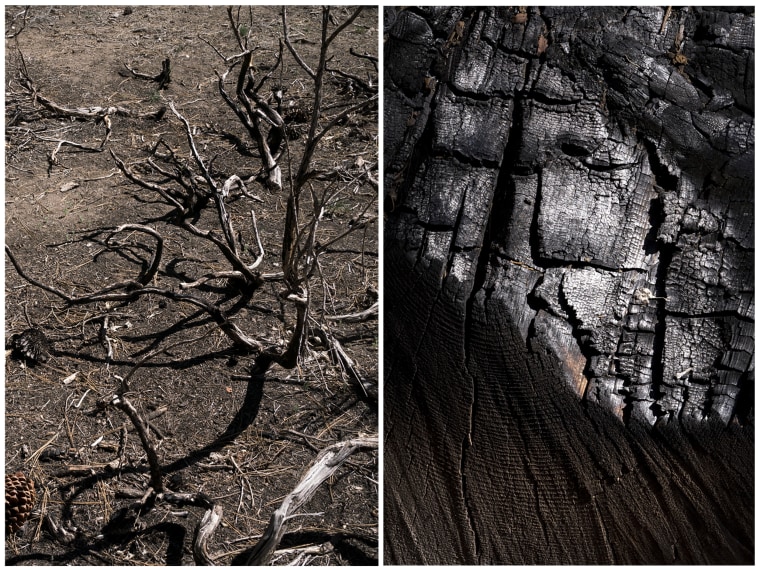
The area, just north of a YMCA camp, covered 173 acres, but NBC News found that because each step of work is reported separately, those acres were entered into the database multiple times.
They first appeared in 2016, when the Forest Service assigned workers to cut trees to reduce the area’s density. The agency came back two years later, pruning the remaining trees and piling the cut wood across the full 173 acres, then chipping 52 acres of it. A few months later, workers burned 18 acres of the piles.
The pruning, piling, chipping and burning were entered as separate items in the database and the agency reported them as 416 acres of treated land in its 2019 fiscal year totals to Congress. In summer 2021, it burned the remaining 155 acres of piles, reporting them in that year’s totals.
The Forest Service’s efforts ultimately reduced fire risk on 173 acres of land, but they were reported to Congress as 744 acres over four fiscal years.
“These acres are reported six times because we must request funding to accomplish the full suite of activities on the same 173 acres,” said Muehlhof, the service’s spokesperson. “Each of these activities needs to be planned and budgeted for annually.”
The Forest Service tells Congress that it reduces wildfire risk on more than 2.5 million acres of its land every year. But this process of recounting the same acres any time more than one type of work is completed means that far less land is protected from damaging fire than is being reported.
The double, triple and quadruple counting has a significant impact on the totals. NBC News analyzed the agency’s publicly available data, finding that roughly one-third of the nearly 250,000 areas reported in the database from fiscal year 2007 to FY2021 were counted more than once. A handful were counted more than 30 times.
“It makes sense we want to show how much work it takes to get something treated. It doesn’t to count the same acres over and over again and say we fixed this much,” said a regional hazardous fuel program officer, who spoke on the condition of anonymity and was not authorized to speak publicly about their work. “If you interpreted those numbers to say, ‘Hey, we mitigated risk on this many acres,’ you’d be wrong.”
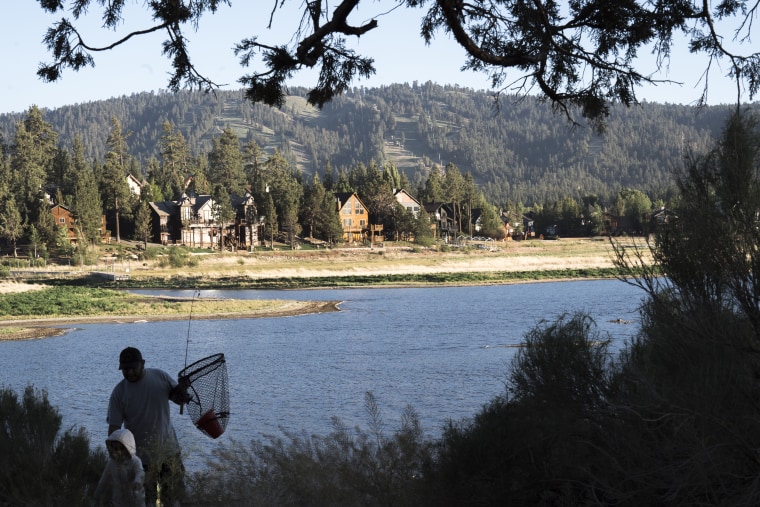
‘Misleading data’
The Forest Service started reporting its progress on fuel treatments to Congress in the late 1990s. For most of the years since, the agency has been on notice that oversight agencies considered its way of counting progress inaccurate and recommended changes.
The Government Accountability Office first called out the agency for “problems with the incentives” its total acreage goals had created in a 1999 report and for its “misleading data” in a 2003 report, saying it was “creating the impression that more acres are receiving treatments than what is actually occurring.”
Over the two decades since, those criticisms have been repeatedly echoed by the GAO and the Forest Service’s Inspector General, with outside evaluations and studies also recommending changes. In response to many of those recommendations, the agency repeatedly described its plans to focus on outcome-based metrics. It tried several different methods of reporting the program’s outcomes over the years, but “total acres treated” remained its primary metric.
The Inspector General most recently examined the counting problem in a 2016 report, which warned that “Congress and FS [Forest Service] management run the risk of making funding and prioritization decisions based on inaccurate information.”
NBC News found that the issues with how the agency reports its data have continued since that report, and that those inaccuracies are not described in the Forest Service’s annual budget justifications to Congress. For the past two years, the agency described its annual goals for acres treated, immediately followed in the same paragraph by the total acres at high risk across the National Forest system. Muehlhof said the agency is always striving to do better at relaying information.
In the past five years, the national totals of treated forestland reported to Congress have been inflated by 2.5 million acres, an overstatement of 17%, according to an NBC News estimation.
The overcounting was worse in the areas with greater risk. In California, total acres treated have been overstated by an estimated 27% in the past five years, and by roughly 35% in the places near the most people, the state’s wildland urban interface areas.
The Forest Service noted that its hazardous fuels program “uses several reporting metrics that address different aspects of performance.” Total acres treated is one of those, but others “better describe the outcome of reduced risk from wildfire.”
But several Forest Service employees said that total acres treated is still the main metric used to measure performance.
“Right now all of our metrics are about quantity, not quality,” said the regional hazardous fuel program officer. “The people who oversee everything from the ranger districts on up haven’t been held accountable to [the other] metrics. Until they are, it will be business as usual.”
Resources
However the Forest Service’s work is measured, scaling up to meet its new goals will be a massive task.
Climate change and drought have narrowed the time windows for safe burning. Large trees that are cut typically get sold to sawmills to become lumber, but the number of sawmills in the West has dramatically declined in the past few decades, and it is difficult to incentivize new ones to open near national forests. Little infrastructure exists for disposing smaller trees, despite oversight agencies sounding the alarm about that need since the 1980s.
For the timber industry in California, that’s the biggest barrier, said Matt Dias, president of the California Forestry Association, an industry group. “You can have all the goals and objectives that you want, but if you don’t have the outlets to take the material, you are not going to achieve those,” he said. “There is literally nothing to do with the material. … But leaving it on the landscape is not what we want to do.”
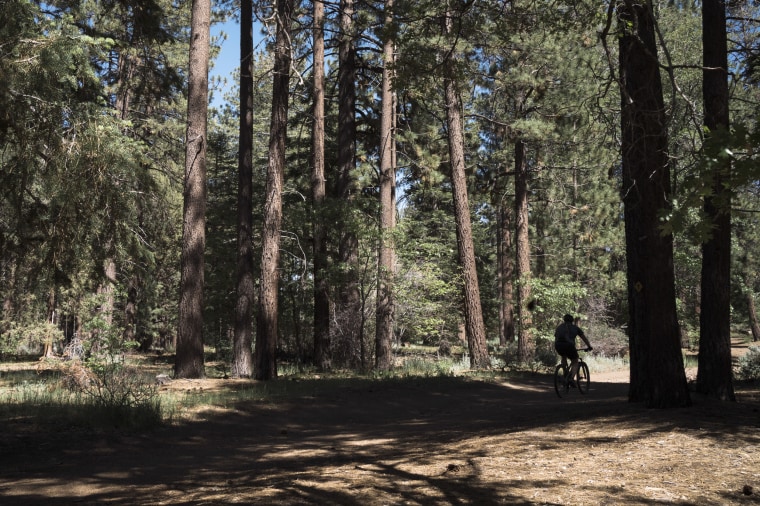
Lack of trained staff, meanwhile, prevents some planned burns from taking place. Prescribed fires require well-trained crews to execute successfully. Data from state regulators in California and Colorado for recent years show that after weather-related issues, lack of staffing was the most common reason planned burns did not happen.
“That’s always going to be the No. 1 thing — just not having enough people,” said Marek Smith, North America fire director for The Nature Conservancy, one of the main nonprofit partners for the Forest Service’s fuel treatment program. “Most of the resources being provided have been for wildfire response or suppression. … We don’t have the same type of workforce dedicated to prescribed fire.”
Most of the crews used for planned fires also fight unplanned fires, further limiting their availability. Citing staffing, limited resources and fire safety risks, Forest Service Chief Randy Moore paused almost all controlled burns nationwide last summer.
In just the Forest Service’s northwest region, which covers Oregon and Washington, the hazardous fuel program has more than 2 million acres of “shelf stock” projects — those that have been through the planning process and are just waiting for the staff, resources and timing to be implemented, according to the most recent figures released by the region.
Recent congressional action, including last year’s infrastructure bill, and current pending legislation would target some of these issues, from increasing funding for planned burns to incentivizing new lumber mills and technologies to dispose of nonvaluable fuel, and expanding prescribed fire training. Western states have been ramping up their own budgets for wildfire prevention work.
Even with increased funding and capacity, fixing the burn cycle in America’s forests will still take several decades, said Stephen Pyne, a fire historian and professor emeritus at Arizona State University. “We need to do this for all kinds of reasons — not just to prevent wildfires or fuel buildups, but simply to get these [landscapes] into a form where they’re able to supply all the kinds of goods and services we want out of them.”
“You can have fires of choice or fires of chance,” he said. “But fire isn’t going to go away, and what really makes it tricky is that we need it.”
Source: | This article originally belongs to Nbcnews.com






